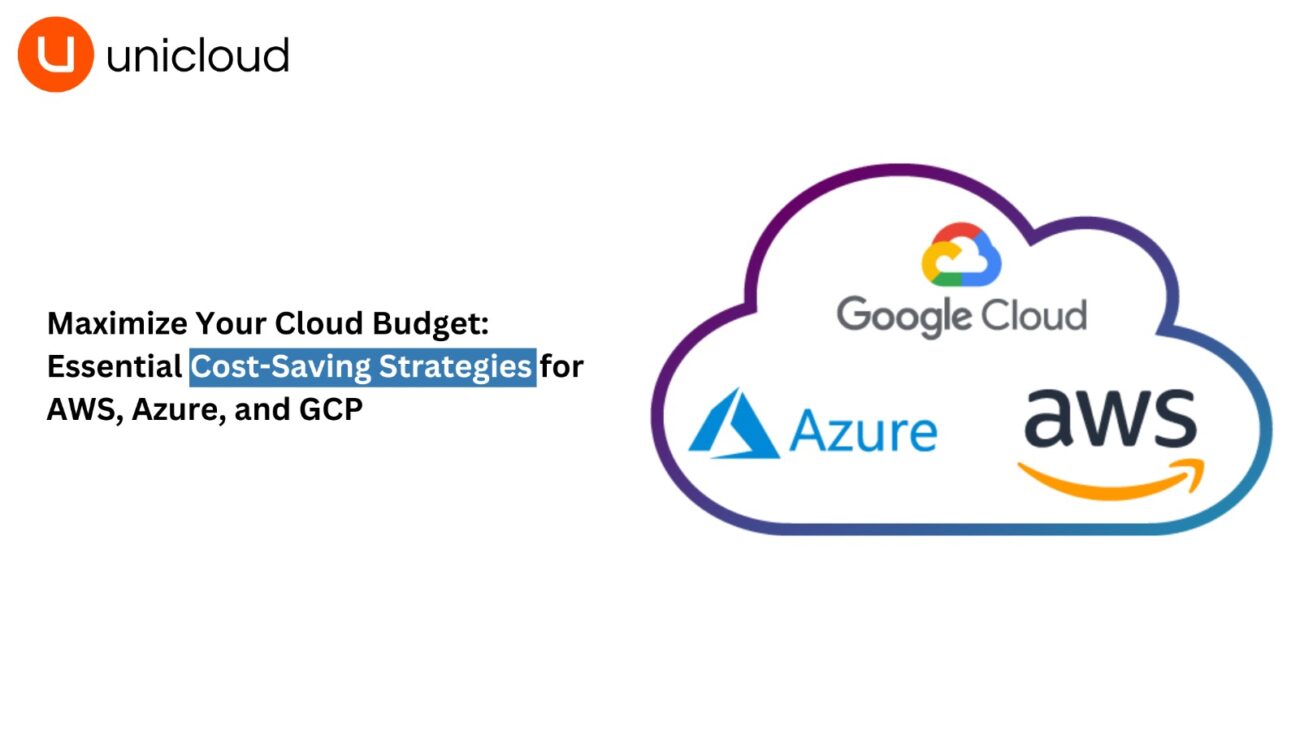
In an era where cloud computing is ubiquitous, managing cloud costs effectively has become paramount for businesses leveraging platforms like AWS, Azure, and GCP. As organizations strive to balance scalability and innovation with budget constraints, cloud cost optimization emerges as a critical discipline. This comprehensive guide delves into proven strategies for cloud cost savings, offering insights on how to maximize efficiency and reduce expenses across the leading cloud service providers.
Navigating Cloud Cost Optimization
Cloud cost optimization is the process of reducing your overall cloud spending by identifying mismanaged resources, eliminating waste, reserving capacity for higher discounts, and right-sizing computing services to scale. It’s a continuous cycle of managing and adjusting resources to ensure that your cloud environment is as cost-effective as possible.
The Pillars of Cloud Cost Reduction
Successful cloud cost management rests on several key pillars: visibility into cloud usage and expenses, effective resource management, and continuous monitoring and optimization. By adhering to these principles, businesses can avoid common pitfalls and ensure their cloud investments deliver the best possible return.
Maximizing Cloud Cost Savings in AWS
Amazon Web Services (AWS) offers a broad set of tools and services designed to help users manage their costs and usage. Here are some strategies to harness cloud cost savings in AWS:
Utilize AWS Cost Explorer
AWS Cost Explorer is an analytics tool that enables users to visualize, understand, and manage their AWS spending over time. With its detailed reports and insights, businesses can identify trends, pinpoint cost drivers, and uncover opportunities for savings.
Leverage AWS Reserved Instances and Savings Plans
Reserved Instances and Savings Plans offer significant discounts compared to on-demand pricing, in exchange for committing to a certain usage level over a period. By carefully planning and purchasing these options, companies can dramatically reduce their AWS expenses.
Cloud Cost Optimization in Azure
Microsoft Azure provides several mechanisms to control spending, optimize costs, and ensure that you only pay for what you need. Key strategies include:
Implement Azure Cost Management + Billing
Azure Cost Management + Billing tool offers comprehensive cost management and analysis capabilities. It empowers businesses to monitor, allocate, and optimize their cloud spend across Azure services effectively.
Take Advantage of Azure Reserved Virtual Machine Instances
Similar to AWS, Azure offers reserved instances that allow users to reserve virtual machines (VMs) on a one or three-year term, offering substantial savings over pay-as-you-go rates.
Reducing Cloud Expenses with Google Cloud Platform (GCP)
Google Cloud Platform (GCP) also provides tools and features to help businesses optimize their cloud costs. Here’s how:
Use GCP’s Cost Management Tools
GCP’s cost management tools, such as the pricing calculator and cost reports, enable users to track and analyze their spending patterns, helping to make informed decisions about where to cut costs.
Explore GCP Committed Use Discounts
GCP offers committed use discounts for VM instances in exchange for committing to using resources for a one or three-year period. This can lead to considerable savings for businesses with predictable, steady usage.
Continuous Cost Monitoring and Optimization
Regardless of the cloud provider, continuous monitoring and optimization are vital. Tools like CloudHealth by VMware or Spot by NetApp offer advanced cloud cost management features across AWS, Azure, and GCP, enabling businesses to maximize their savings through:
- Automated Resource Scaling: Dynamically adjust resources based on demand to avoid overprovisioning.
- Identifying Idle Resources: Automate the detection and removal of unused or underutilized resources.
- Policy-Driven Automation: Implement policies for automated cost-saving actions like shutting down instances during off-hours.
Embracing Financial Governance for Cloud Environments
Implementing Financial Governance Frameworks
A strategic approach to managing cloud costs involves the establishment of robust financial governance frameworks. These frameworks define clear policies and procedures for budgeting, spending, and accountability across cloud environments. By setting up cost allocation tags, businesses can attribute cloud spend to specific departments, projects, or teams, enhancing transparency and promoting responsible usage.
Benefits of a Unified Cost Management Approach
Adopting a unified approach to cost management across different cloud platforms ensures consistency in tracking, reporting, and optimizing expenditures. Centralized dashboards that aggregate data from AWS, Azure, and GCP provide a comprehensive view of cloud costs, facilitating informed decision-making and enabling businesses to identify and act on cost-saving opportunities swiftly.
Leveraging AI and ML for Cloud Cost Optimization
AI-Powered Cost Optimization Tools
The use of artificial intelligence (AI) and machine learning (ML) technologies is becoming increasingly popular in automating and enhancing cloud cost optimization efforts. These technologies can analyze spending patterns, predict future costs, and recommend specific actions to reduce expenses. For instance, AI algorithms can automatically adjust resources in real-time based on usage patterns, ensuring optimal performance without overspending.
The Future of Automated Cloud Cost Management
As AI and ML technologies continue to evolve, their role in cloud cost management is set to grow. Future advancements may include more sophisticated predictive analytics for long-term budget planning and the automation of more complex cost-optimization tasks. Staying abreast of these technologies and incorporating them into your cloud cost optimization strategy will be key to maintaining a competitive edge.
Conclusion
Achieving cloud cost savings in today’s dynamic cloud environment requires a multifaceted approach, blending strategic planning, continuous monitoring, and the adoption of advanced technologies like AI and ML. By implementing the strategies discussed, including leveraging financial governance and embracing AI for cost optimization, businesses can significantly reduce their cloud expenditures across major platforms like AWS, Azure, and GCP. Remember, optimizing cloud costs is an ongoing process that necessitates a proactive stance to adapt to changing usage patterns and evolving business needs. With the right approach and tools, organizations can unlock the full potential of their cloud investments, driving efficiency and innovation while keeping costs under control.
